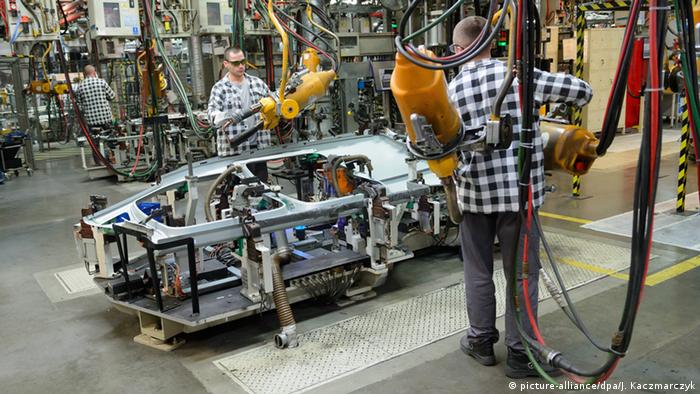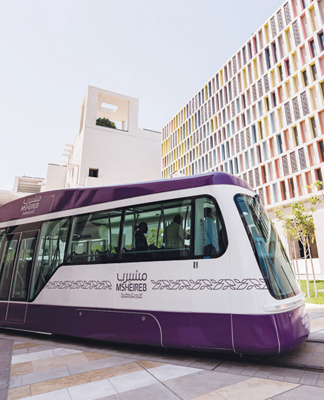Is inequality widening in Poland?
Poland has long been the poster boy among EU economies, but behind its remarkable growth story is a widening inequality gap. This may help explain why Poles vote for parties that promise redistribution.
“According to the Gini index, which measures social inequality, Poland occupies one of the best places in Europe,” the leader of the country’s ruling Law and Justice (PiS) party, Jaroslaw Kaczynski, said in an interview with the right-wing daily Gazeta Polska on November 26, 2019.
Prime Minister Mateusz Morawiecki said a week earlier that in Poland “the level of inequality is the same as in Denmark, and lower than the EU average.”
Since coming to power in 2015, PiS has introduced various social transfer policies, its flagship being “500+,” which gives 500 zlotys (€ 110) per month to families with two or more children. Its tax reform of early 2022 was also set out as redistributionist, although it is far from clear whether that is the case.
A recent study shows that official figures have tended to underestimate inequality in Poland, casting PiS’s claims in doubt.
Research by Polish economists Michal Brzezinski, Michal Myck and Mateusz Najsztub, in their paper ‘Sharing the gains of transition’ , indicates that Poland has one of the highest rates of inequality in the EU and also that the gap is widening.
Miscalculated wealth?
They argue that the official data on inequality in Poland, published by the Central Statistical Office and Eurostat, are based on household surveys which do not give a full picture of inequality, because the most affluent households do not usually participate in the surveys, or if they do, they tend to underestimate their wealth.
Using combined survey and tax return data, the authors say their study is a more accurate indicator of inequality than those using other methodologies.
They find that the highest-income earners benefited most during the post-communist transformation: The annual rate of income growth for the top 5% of the population exceeded 3.5%, while the median income grew on average by about 2.5% per year.
“We show that each percentile of disposable income distribution in Poland saw income increased in absolute terms between 1994 and 2015,” Brzezinski told DW.
This implies that on average the incomes of all social groups increased during the transition to the market economy. However, these gains were not shared equally.
“According to our adjusted estimates, the cumulative growth in real income over 1994-2015 for the top 1% of Poles reached 122%-167%, while for the bottom 10% the corresponding number is at most 57%,” he went on to say.
“We have had a very fast-growing economy and in the last two decades most has gone to the highest earners,” Brzezinski said.
“There is a strong correlation of higher incomes and those engaged in export sectors. Also, we have had very regressive tax and transfer regimes. There is much lower redistribution than in Western countries. Social transfers were changed a bit with the 500+ scheme, but not much. Another reason is the underlying inequality of workers’ productivity. “Some work in foreign firms but a large group of low productivity, 10%, don’t, for example in agriculture,” Brzezinski noted.
Political choice or inevitable march of progress?
The researchers suggest that the initial causes of this lie in the basic premises of the original shock therapy economic reforms of the early 1990s and the tax reform of 2004, which created a 19% flat tax and was introduced by a nominally left-wing government. The reforms allowed top earners to reduce the highest tax threshold from 40% to 19%.
The 1990 Balcerowicz plan was based on deep and sudden economic changes — the marketization of prices, shutdown of state-owned companies and mass privatization.
“When Poland was undergoing political transformation in 1989, there was little public discussion as to which model of capitalism was to be introduced. It looks different in Scandinavia than in Anglo-Saxon countries. When the system transformation took place in Poland, the neoliberal doctrine triumphed in the West,” said Elzbieta Maczynska, a professor of economics at the Warsaw School of Economics.
The dependent market economy model
“After years of exclusion from foreign capital flows and depleted from internal sources of finance, Poland focused its energy on attracting foreign direct investment (FDI) in complex industries to integrate the economy into global value chains and develop domestic firms through positive spillovers,” Nina Lopez-Uroz, a researcher at the European University Institute, told DW.
Poland’s transitional growth model is thus sometimes called the “dependent market economy” (DME) model. DMEs’ comparative advantage lies in assembly platforms and medium-skilled segments of complex manufacturing industries (medium quality cars, machinery, electronics, electrical products).
Lopez-Uroz argues that to sustain this comparative advantage, DMEs need to keep labor costs low.
She noted that real wages did not increase at the same rate as productivity growth: Between 2000 and 2016, labor productivity grew 51% while compensation per worker grew 31%, she said, citing World Bank figures.
In 2014, the proportion of low-earning employees in Poland amounted to one of the highest in Europe (23.6%), with an EU average at 17.2% and was even more acute for workers on temporary contracts.
Producing workers
A study by Elizabeth Dunn, based on ethnographic research at a Polish food-processing plant in the early 1990s, shows how class formation — deliberate efforts to create a managerial class and a working class — was not something that just happened after 1989.
“The new order needed workers to know their place and a new language of management speak has to be imported, mainly from English,” she told DW.
This process in effect divided postcommunist society into winners and losers, she added, which in turn made it easier to remove potential labor unrest and control the cost of labor.
Legitimate versus illegitimate inequality
Economist and ex-Polish Deputy Finance Minister Stanislaw Gomulka said “a significant level of income and wealth inequality may impact positively on the pace of economic growth.”
Anthony Levitas of Brown University asks whether the relative shift in position of Poland vis-a-vis the others — from middling performance on inequality to poor performance — is being driven by the methodology employed or by worse performance.
“After all, to the degree that the standard methodology is based on household surveys one would expect the rich to underreport everywhere,” he told DW.
Edited by: Hardy Graupner


























